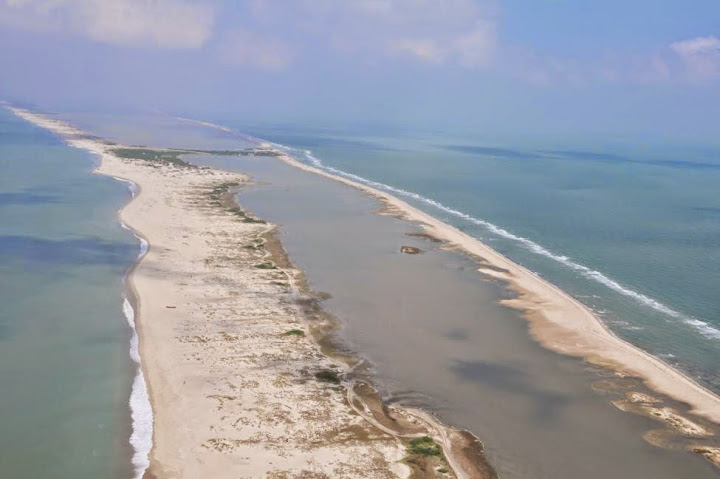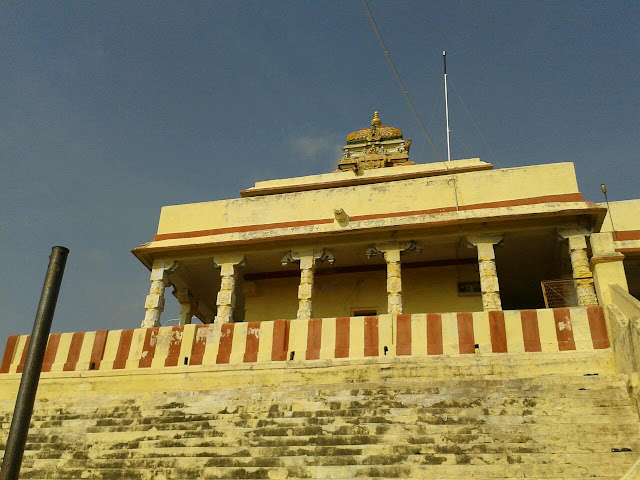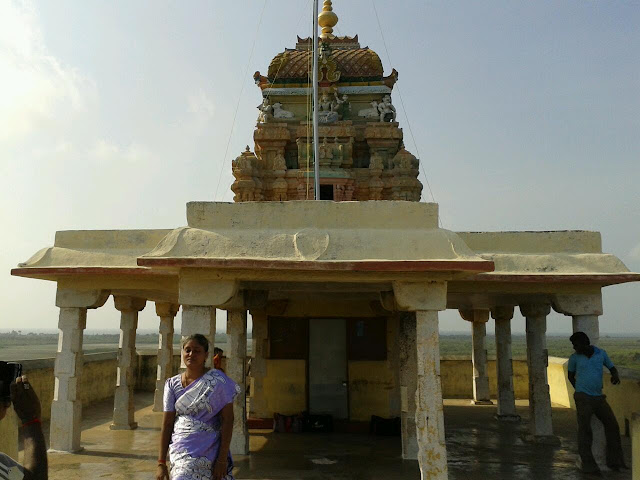Dhanushkodi which is also known as Danushkodi, literally meant "end of the bow". This small town is ghost town in Tamil Nadu. Situated in the southern tip of Pamban Island, this tiny desolated town in South India Dhanushkodi gained special attraction to the visitors for its isolated beauty.
Dhanushkodi is situated to the South-East of Pamban Island or Rameshwaram Island. Danushkodi is about 29 kilometres west of Talaimannar in Sri Lanka. Dhanushkodi railway line is running from Pamban Railway Station, which was destroyed in the 1964 cyclone.
Dhanushkodi is mentioned in the Hindu scriptures and in the Indian epic, Ramayana. It said that Lord Rama built a bridge or causeway, called Ram Setu or "Lord Rama’s bridge". This is the communication cord between the mainland India and Sri Lanka (Ceylon), in order to bring his army across. After Lord Rama won the war against Ravana and crowned a new king of Lanka, Vibhishana, requested Lord Rama to destroy the bridge. Lord Rama broke the bridge with one end of his bow. Hence the name here is Dhanushkodi. It is also said that Lord Rama originally marked the spot for the bridge with one end of his famous bow. The series of rocks and islets currently found in a line between India and Sri Lanka suggests there was indeed a former land connection between India and Sri Lanka.






The name Dhanushkodi is derived from the Sanskrit Dhanus, which means low and kodi in Tamil means tip (i.e.) the tip of the bow. Dhanushkodi is also called Sethu, which means a bridge or causeway.
It is the place where Sri Rama constructed the causeway to reach Lanka. A bath at Dhanushkodi is considered sacred because of Sagara Sangama (i.e.) where two oceans Mahodadhi (Bay of Bengal) and the Ratnakara (Indian Ocean) meet.
Valmiki in his great epic the Ramayana says that Rama when returning from Lanka showed this place to Sita from his pushpaka and said “Here is seen bhanda and worshipped by three worlds. This is extremely holy and destroys great sins.”
The pilgrims take bath here and offer prayers and perform rituals. A bath at the Sethu on the new moon day is considered very sacred.










Also known as “Ramar Padam”, is the highest altitude of Rameshwaram. This temple contains the imprints of Ramar’s Feet. As per Ramayanam, this is point from where Sri Rama had a view of Srilanka.
Dhanushkodi is situated to the South-East of Pamban Island or Rameshwaram Island. Danushkodi is about 29 kilometres west of Talaimannar in Sri Lanka. Dhanushkodi railway line is running from Pamban Railway Station, which was destroyed in the 1964 cyclone.
Dhanushkodi is mentioned in the Hindu scriptures and in the Indian epic, Ramayana. It said that Lord Rama built a bridge or causeway, called Ram Setu or "Lord Rama’s bridge". This is the communication cord between the mainland India and Sri Lanka (Ceylon), in order to bring his army across. After Lord Rama won the war against Ravana and crowned a new king of Lanka, Vibhishana, requested Lord Rama to destroy the bridge. Lord Rama broke the bridge with one end of his bow. Hence the name here is Dhanushkodi. It is also said that Lord Rama originally marked the spot for the bridge with one end of his famous bow. The series of rocks and islets currently found in a line between India and Sri Lanka suggests there was indeed a former land connection between India and Sri Lanka.





The name Dhanushkodi is derived from the Sanskrit Dhanus, which means low and kodi in Tamil means tip (i.e.) the tip of the bow. Dhanushkodi is also called Sethu, which means a bridge or causeway.
It is the place where Sri Rama constructed the causeway to reach Lanka. A bath at Dhanushkodi is considered sacred because of Sagara Sangama (i.e.) where two oceans Mahodadhi (Bay of Bengal) and the Ratnakara (Indian Ocean) meet.
Valmiki in his great epic the Ramayana says that Rama when returning from Lanka showed this place to Sita from his pushpaka and said “Here is seen bhanda and worshipped by three worlds. This is extremely holy and destroys great sins.”
The pilgrims take bath here and offer prayers and perform rituals. A bath at the Sethu on the new moon day is considered very sacred.
Gandamathana Parvatham:
It is one of the locations slightly above ground level. So entire island is visible atop this temple. Need to climb around 30 steps - no alternate arrangement for those who cant climb. It is around 6 km from Rameswaram main temple and better to visit during day light. It is believed that Lord Rama and others saw the Srilanka shore from here and strategized on how to reach there. An imprint of Lord Rama's feet is worshiped here.






Also known as “Ramar Padam”, is the highest altitude of Rameshwaram. This temple contains the imprints of Ramar’s Feet. As per Ramayanam, this is point from where Sri Rama had a view of Srilanka.



0 comments:
Post a Comment